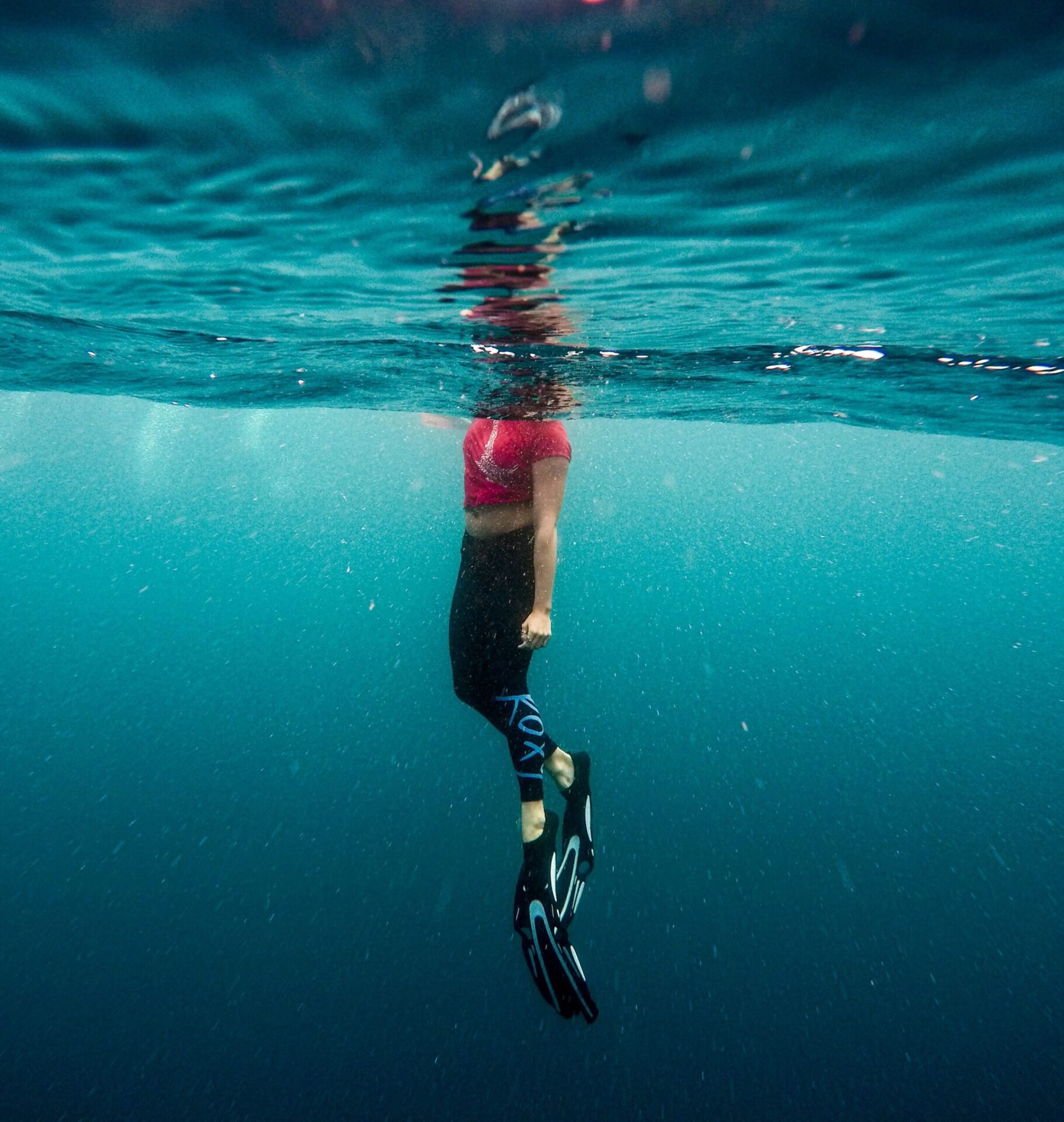Freediving is a type of diving where the diver uses no breathing apparatus, instead relying on their own breath holding skills to extend their stay underwater. As your skills as a freediver increase your ability to hold your breath for longer periods or descend to deeper depths increases opening up a ton of amazing experiences and interactions with marine life and the undersea world.
The sport of freediving has increased in popularity over the past few years. This may be a result of the fact that freediving offers a more natural and intimate experience with the underwater environment. Also, the meditative state and qualities that freediving requires is an impactful and soulful experience. I know this sport will continue to grow and flourish and become more commonplace as accessibility to programs and training for free diving continues to improve.
Types of Freediving
There are many different types of freediving, from freediving for relaxation and activity or freediving competitively as a sport. There is a lot to learn about this exciting and evolving sport.
As noted there are different types of freediving, typically freediving is broken up into 2 major categories. Freediving which is typically done in a pool, and freediving which typically occurs in the open water.
In Pool Freediving Disciplines
Static apnea:
This is where the freediver remains motionless in the water for as long as possible, without moving or even swallowing. The world’s best static apnea freedivers can hold their breaths for 9+ minutes with records even into the 11+ minute breath-hold duration.
Dynamic apnea:
This is where the freediver swims horizontally as far as possible on a single breath. Dynamic apnea has two subtypes. Dynamic apnea with fin and dynamic apnea without fins.
Open Water Freediving Disciplines
Free immersion:
This is where the freediver descends head-first down a line, without using their fins.
Constant weight:
This is where the freediver descends and ascends under their own power. With or without fins and usually some amount of weight on a belt or a vest. The amount of weight remains the same throughout the dive.
Variable Weight:
This type of freediving is similar to constant weight freediving, except that the freediver typically uses some additional weight to help with the descent but ascends under their own power.
No Limit:
This freediving discipline is where the freediver descends and ascends however they like, whether it be with a sled or holding onto a heavy object. They also typically ascend with some sort of buoyancy device.
Freediving Equipment
Mask
Most freediving masks are frameless and have lower volume. A low-volume mask has smaller airspace making it easier to descend.

Snorkel
A snorkel isn’t used for all freediving, but depending on your discipline it helps.
Fins
Once again depending on your discipline, you may participate in mono fin, bi-fin or no fin freediving.
Lanyard
A clip with some cordage that connects the freediver to a line. An important safety tool for deep or long breath hold freediving.
Weights
Not all freedivers use weights and different types of weights are used for different types of freediving but most typically a weight belt with some lead weight is used.
Wetsuit
depending on the environmental conditions different types of freediving wetsuits are used.
NEVER FREEDIVE ALONE
 This is the most critical item to know about freediving – NEVER FREEDIVE ALONE. Always have a similarly trained buddy with you. Also, make sure you and your buddy have a dive plan.
This is the most critical item to know about freediving – NEVER FREEDIVE ALONE. Always have a similarly trained buddy with you. Also, make sure you and your buddy have a dive plan.
How to freedive – a quick overview
Freediving is very different than either snorkeling or scuba diving, it is truly its own discipline and requires the diver to build their skill and focus on their breath hold diving techniques. It is through these breath hold control techniques that freedivers are able to extend their time under the water.
One of the key techniques that freedivers use to extend their time underwater is lowering their heart rate through relaxation and controlled breathing. It is through this process that the body uses less oxygen heightens the freediving experience.
Breathing techniques to lower heart rate and enhance relaxation are very similar to meditative techniques.
- Longer exhalation – during exhalation the heart rate decreases. By exhaling slightly longer than you inhale your heart rate will start to lower and your level of relaxation will. be enhanced.
- Pauses – pausing slightly between inhalation and exhalation continues the lowering of the heart rate and also supports increased relaxation as you focus on your breath.
Other techniques for extending your freedive
- Breathing up – This is where the freediver takes several deep breaths before diving, to maximize the amount of oxygen in their lungs.
- Belly Breathing – combining this with your regular breathing techniques enhances the amount of oxygen in your system.
As you descend
Equalization is an important skill to learn and improve on as you learn to freedive. Equalization This is where the freediver clears their ears regularly to prevent pain in the ears and sinuses as well and normalizes the airspace in their mask to prevent mask squeeze.
The Dive
laying flat on the surface, taking your final relaxation breaths through your snorkel, hang your arms down, then bend at the waist and kick one leg up in the air and start your dive down. Most often the snorkel is removed from the mouth at this time and as you descend equalize your ears and sinus’. As you ascent to the surface and your dive ends you will typically finish with some recovery breaths.

So there you have it – an introduction to freediving. Why not give it a try next time you adventure out into the ocean or if this has piqued your interest look into the many agencies that offer freediving training.
Updated on: December 05, 2023

